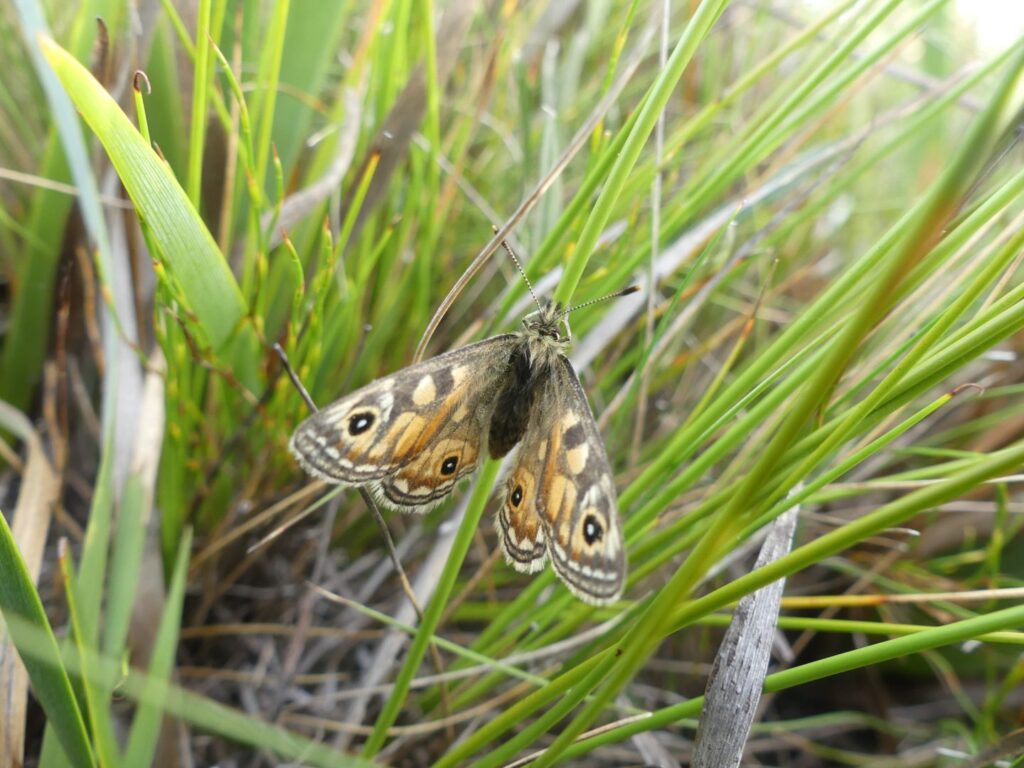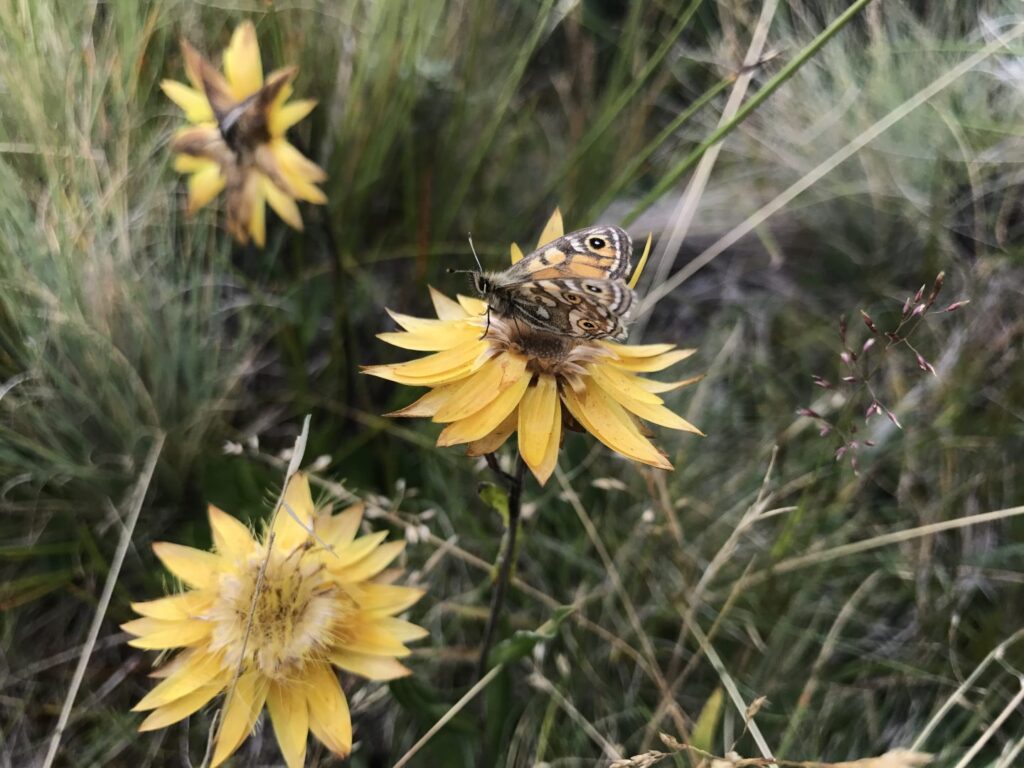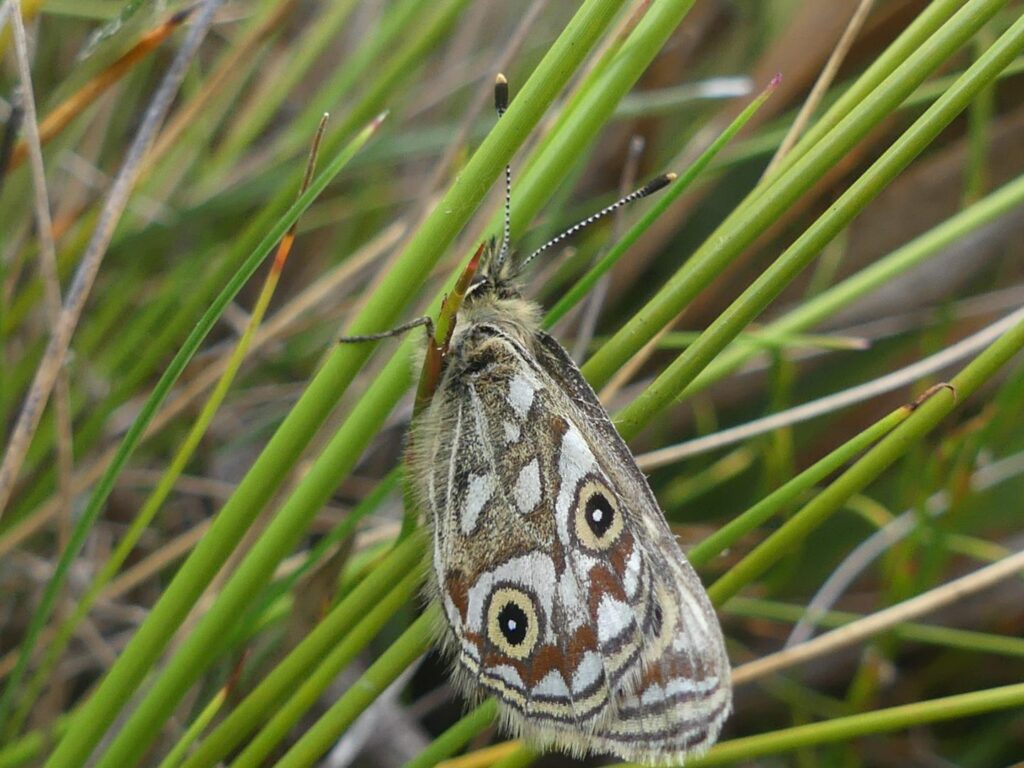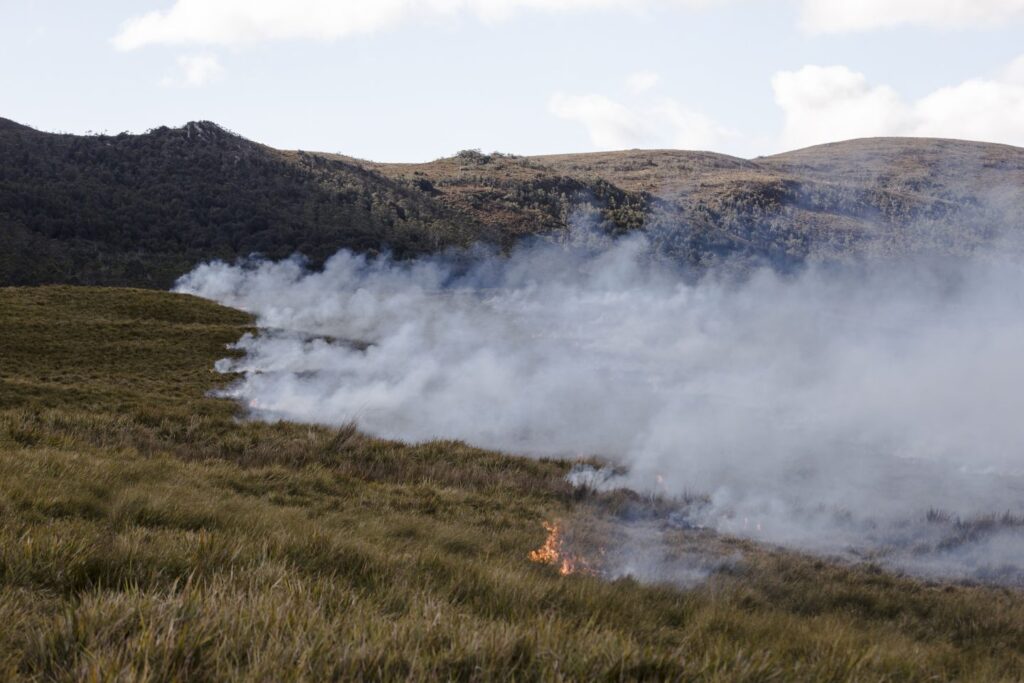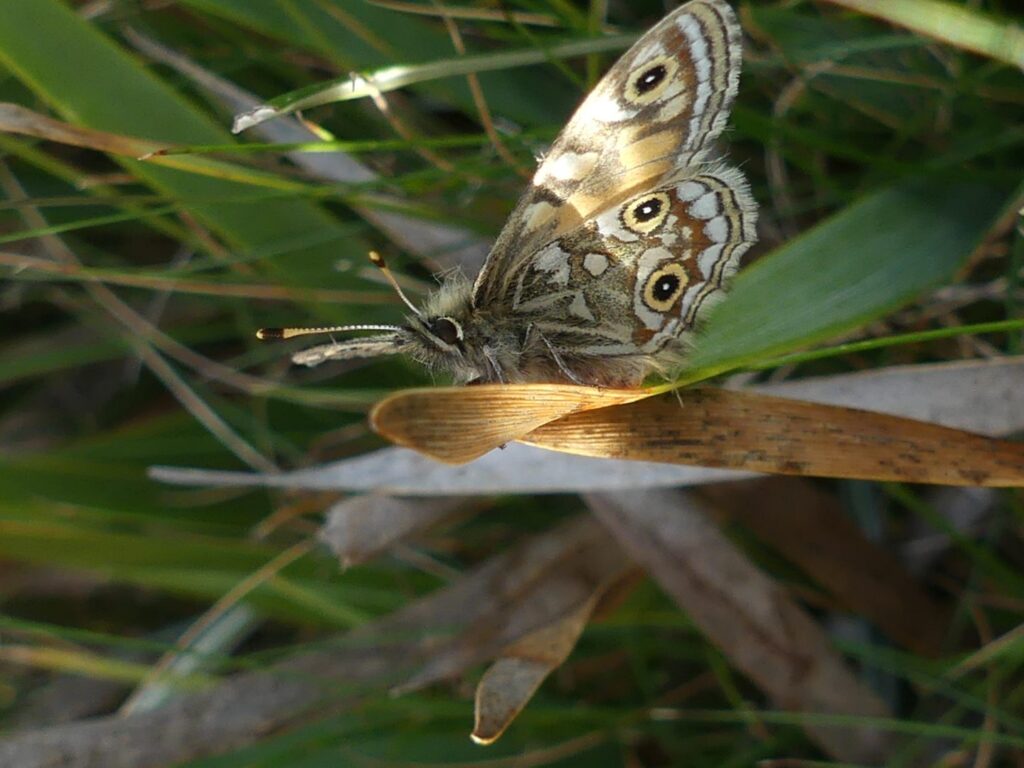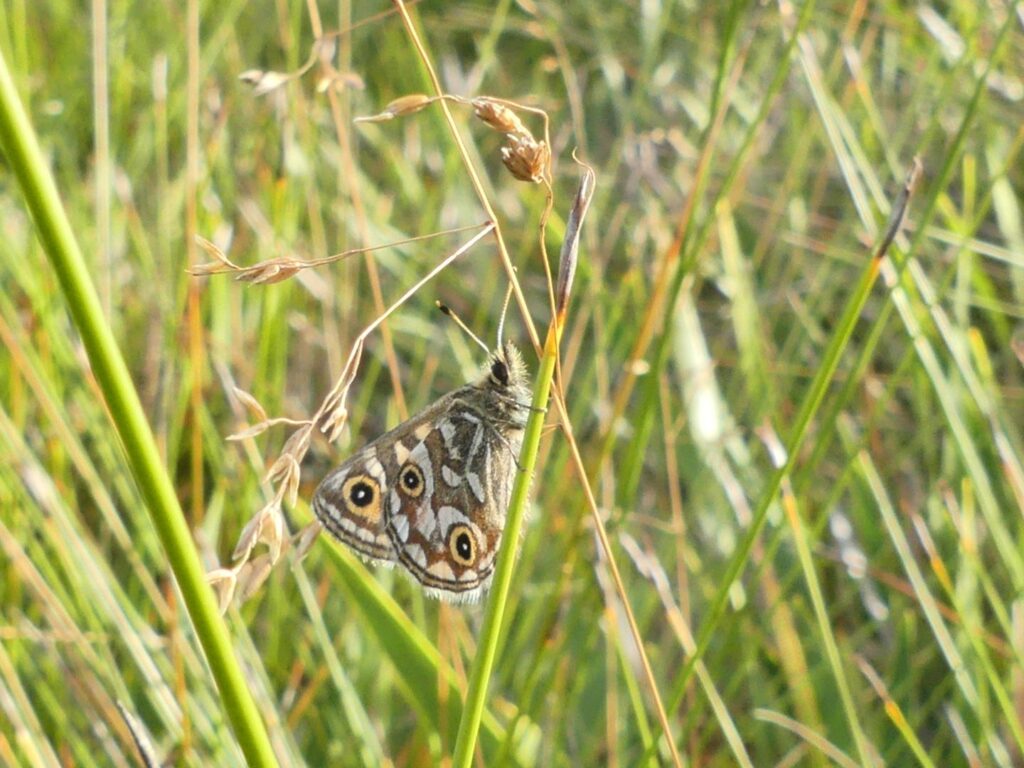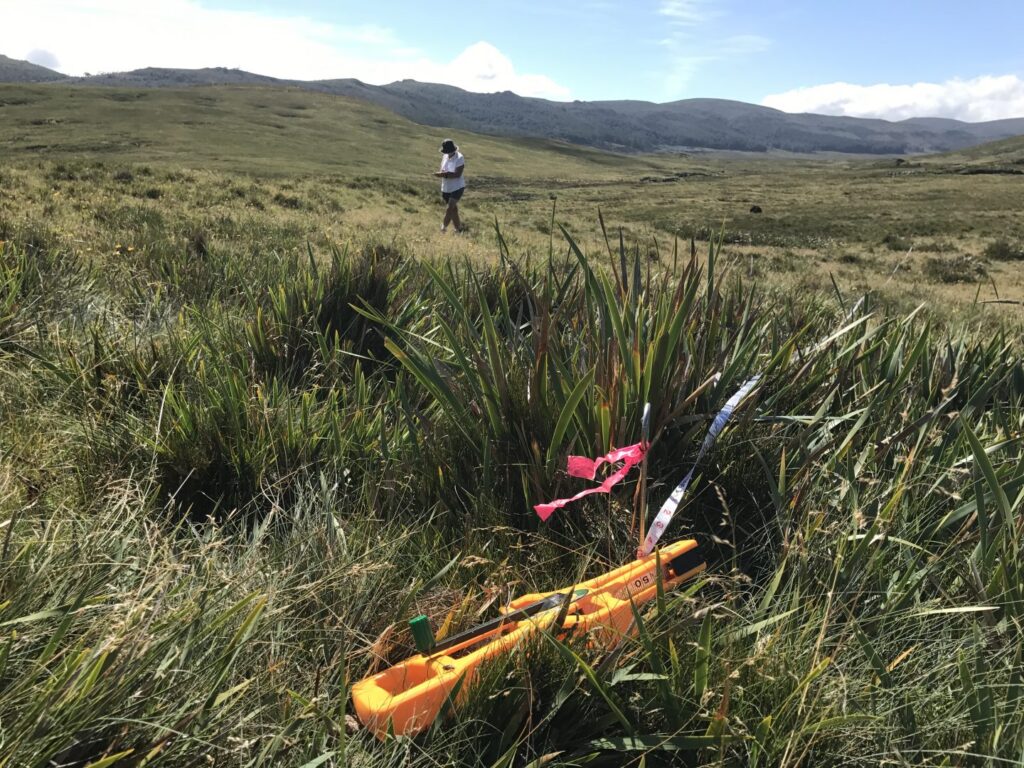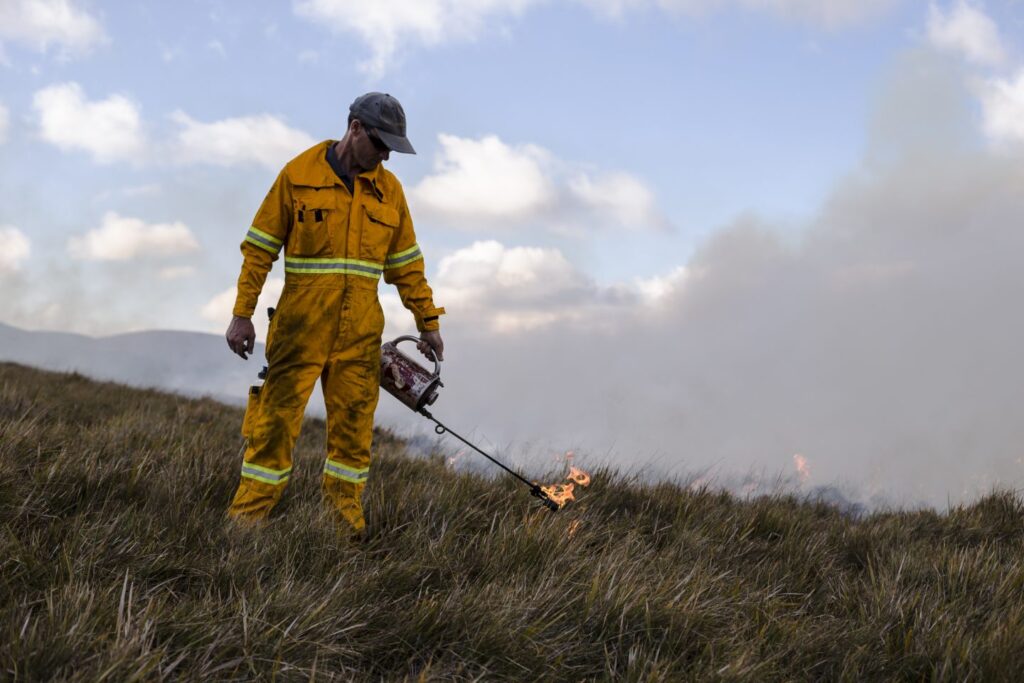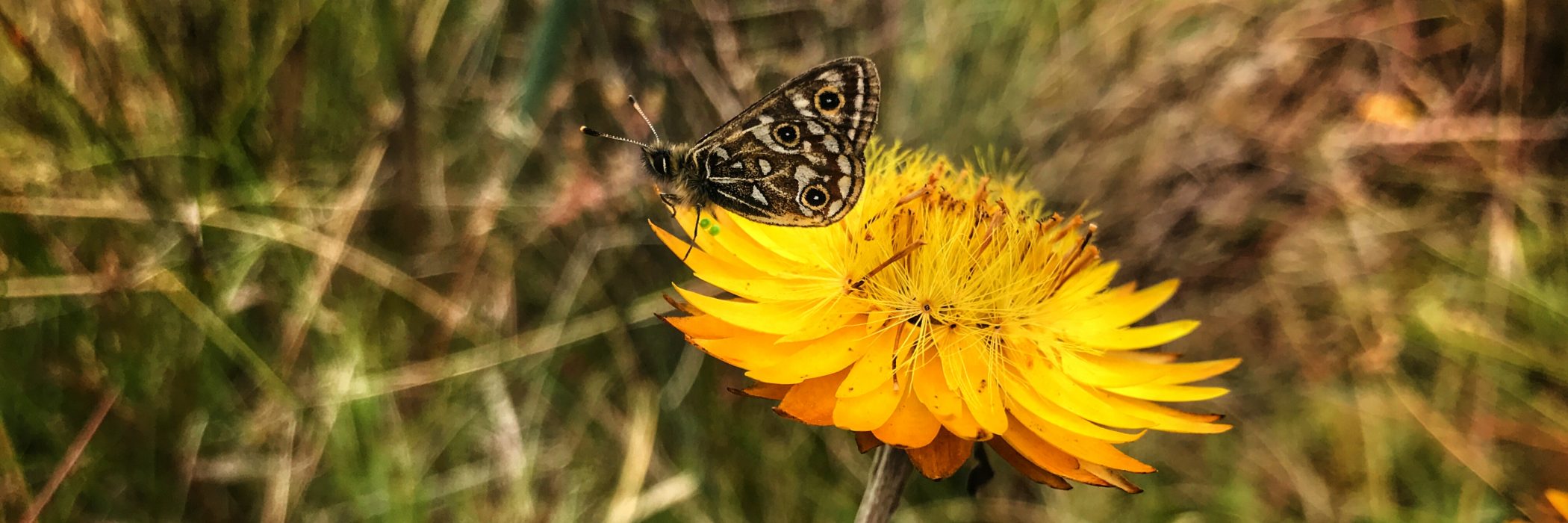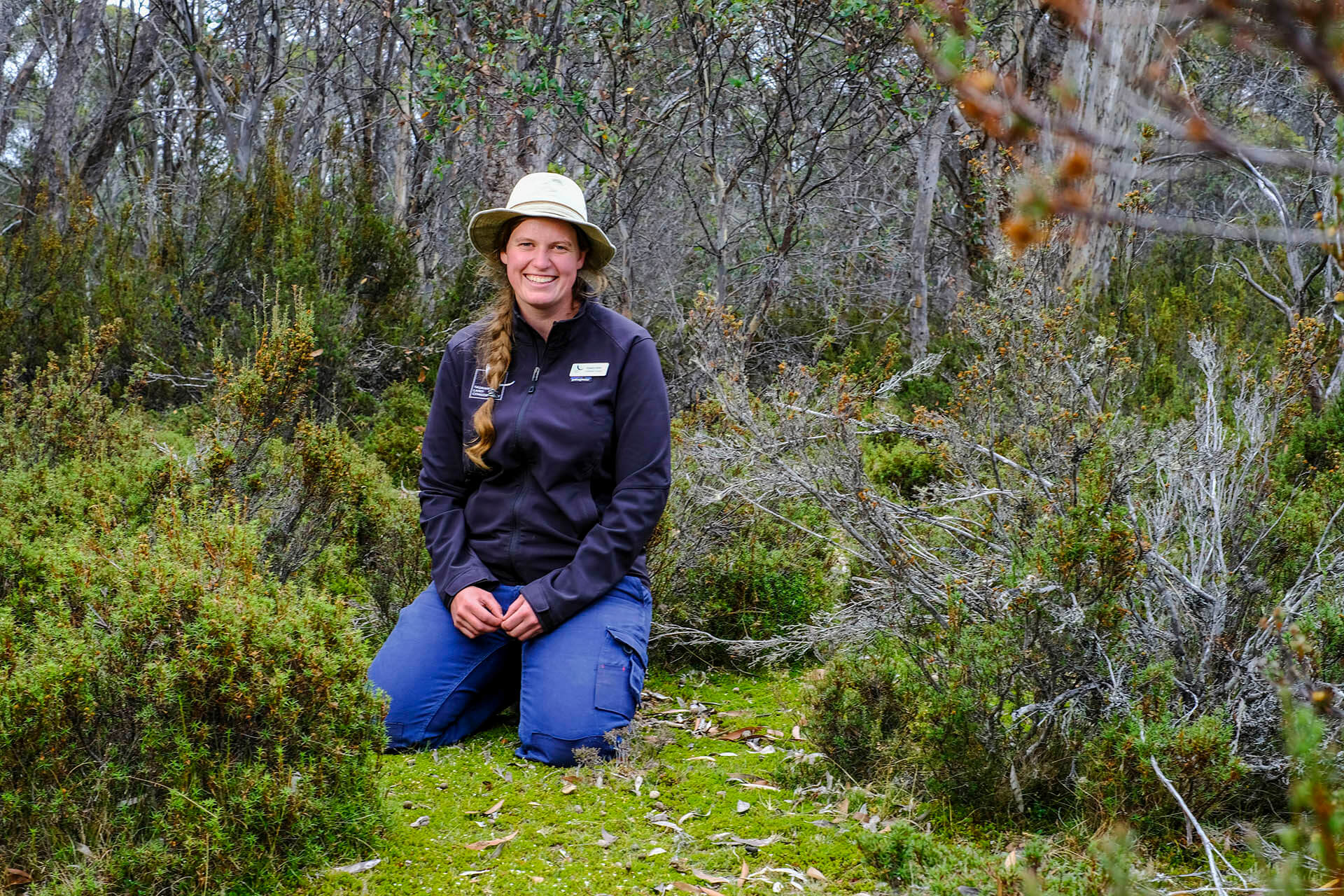From the field: monitoring the ptunarra brown butterfly
Update: In 2022, TLC researchers Alex Kutt, Cath Dickson, Joe Quarmby, Denna Kingdom and Rowena Hamer published a paper on the work at the Vale of Belvoir Reserve, ‘Evaluating predictors of Ptunarra Brown Butterfly Oreixenica ptunarra abundance on a conservation reserve to refine future monitoring, which can be downloaded here.
The life of a zoologist (that’s someone who studies animals, not someone who studies zoos!) isn’t all selfies with cute and fluffy critters. Picking zoology as your career typically means you’ve signed up for working antisocial hours while being bitten, stung, scratched, weed on (or worse: much, much worse) and parasitised by all sorts of creepy crawlies while trying to find your animal of interest. In fact, this can often develop into a competition, trading war stories to establish who had the most horrific or disgusting fieldwork conditions.
One sneaky group of zoologists, however, have figured out how to stay above all of this. I am referring to the lepidopterists (or butterfly-ologists, for those of us who don’t speak Latin!), who have cleverly specialised in a group of animals which are notoriously selective about the conditions in which they show themselves. I have just discovered how much I’ve been missing out on while monitoring the threatened ptunarra brown butterfly (Oreixenica ptunarra) at the TLC’s Vale of Belvoir Reserve. This Goldilocks of the animal world flies for only 3 weeks in mid-March, and only in temperatures of 18°C or above, with no rain, wind or too much cloud cover, between the hours of around 10am and 4pm. They obligingly fly up from the grasslands to be counted as you walk past, but quickly return to what they were doing almost as soon as you’ve passed by. All of which adds up to some very civilised fieldwork, conducted at a gentle stroll!
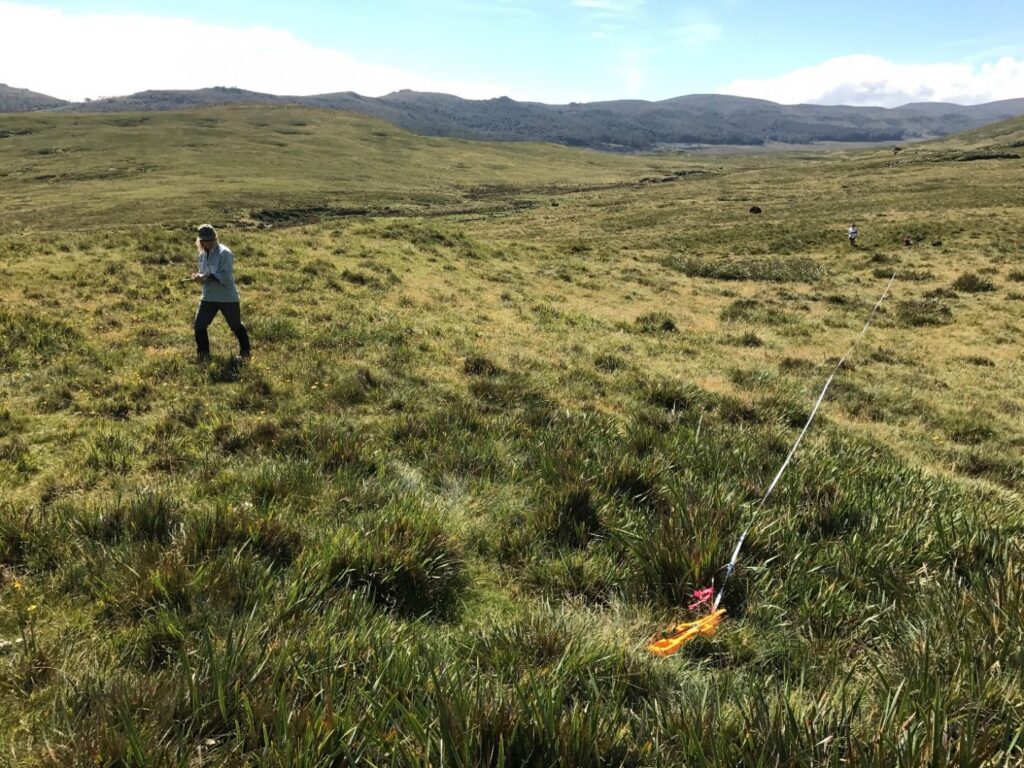
This delicately beautiful species is under threat because it is dependent on our native Poa grasslands, which are one of the most endangered vegetation types in the state. The Vale of Belvoir, just a stone’s throw from Cradle Mountain, supports some of the best condition native grassland in Tasmania, complete with a resident population of ptunarra brown butterflies. The TLC’s Denna Kingdom established a monitoring program for the butterflies in 2010 with guidance from Phil Bell, Tassie’s resident expert, and has been surveying every year since with the help of a dedicated team of volunteers.
One of our main motivations is to make sure that the TLC’s management is suitable for the persistence of this species. Grassland ecosystems often require frequent, low-level disturbance (such as fire or grazing) to maintain species diversity and prevent encroachment by other vegetation types. Prior to the TLC’s purchase of the property ten years ago, the Vale was managed as a summer grazing property for over 100 years, with regular burns to generate green pick for grazing cattle. Since acquiring the property, the TLC has instituted a program of ecological burning and is phasing out cattle grazing to reduce impacts on the freshwater habitats in particular. Monitoring ptunarra brown butterflies is part of a larger ecological monitoring program aimed at making sure that these changes do not impact on the unique natural values of the Vale of Belvoir reserve.
Denna had to hand over the mantle this year, as she’s been busy bringing the TLC’s newest family member into the world. Along with Alison Dugand, one of our veteran volunteers, I therefore had the chance to get out and see what all the fuss is about. After spending a calm, sunny day counting gently fluttering butterflies in the beautiful highland grasslands, I think Denna may have some problems reclaiming her favourite survey program once she’s back from maternity leave!
